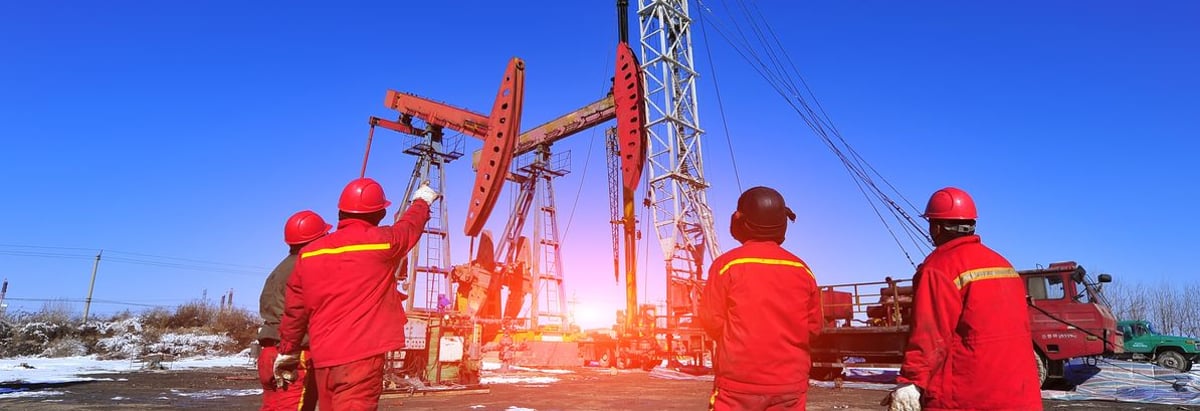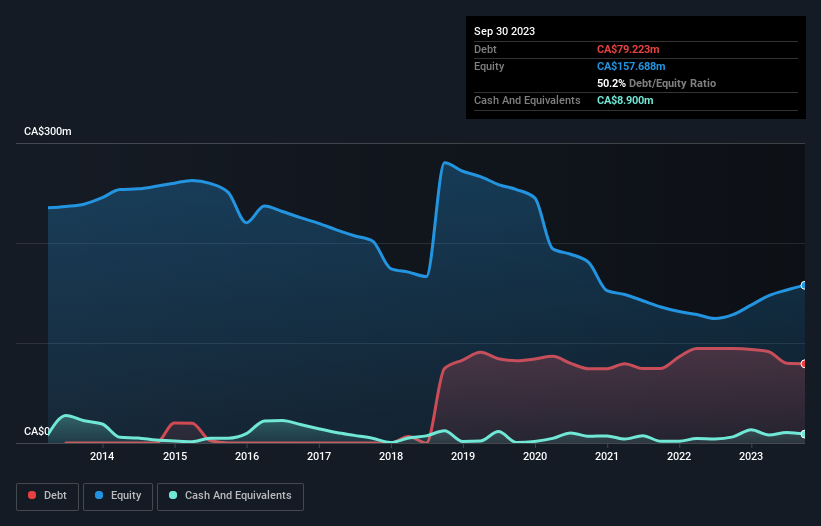
David Iben put it well when he said, 'Volatility is not a risk we care about. What we care about is avoiding the permanent loss of capital.' When we think about how risky a company is, we always like to look at its use of debt, since debt overload can lead to ruin. As with many other companies AKITA Drilling Ltd. (TSE:AKT.A) makes use of debt. But is this debt a concern to shareholders?
When Is Debt Dangerous?
Debt is a tool to help businesses grow, but if a business is incapable of paying off its lenders, then it exists at their mercy. In the worst case scenario, a company can go bankrupt if it cannot pay its creditors. However, a more frequent (but still costly) occurrence is where a company must issue shares at bargain-basement prices, permanently diluting shareholders, just to shore up its balance sheet. Having said that, the most common situation is where a company manages its debt reasonably well - and to its own advantage. The first step when considering a company's debt levels is to consider its cash and debt together.
Check out our latest analysis for AKITA Drilling
What Is AKITA Drilling's Net Debt?
As you can see below, AKITA Drilling had CA$79.2m of debt at September 2023, down from CA$94.4m a year prior. On the flip side, it has CA$8.90m in cash leading to net debt of about CA$70.3m.

How Strong Is AKITA Drilling's Balance Sheet?
The latest balance sheet data shows that AKITA Drilling had liabilities of CA$28.9m due within a year, and liabilities of CA$80.4m falling due after that. On the other hand, it had cash of CA$8.90m and CA$56.2m worth of receivables due within a year. So its liabilities outweigh the sum of its cash and (near-term) receivables by CA$44.3m.
This deficit is considerable relative to its market capitalization of CA$71.0m, so it does suggest shareholders should keep an eye on AKITA Drilling's use of debt. This suggests shareholders would be heavily diluted if the company needed to shore up its balance sheet in a hurry.
We measure a company's debt load relative to its earnings power by looking at its net debt divided by its earnings before interest, tax, depreciation, and amortization (EBITDA) and by calculating how easily its earnings before interest and tax (EBIT) cover its interest expense (interest cover). This way, we consider both the absolute quantum of the debt, as well as the interest rates paid on it.
Looking at its net debt to EBITDA of 1.4 and interest cover of 4.0 times, it seems to us that AKITA Drilling is probably using debt in a pretty reasonable way. But the interest payments are certainly sufficient to have us thinking about how affordable its debt is. Notably, AKITA Drilling made a loss at the EBIT level, last year, but improved that to positive EBIT of CA$23m in the last twelve months. The balance sheet is clearly the area to focus on when you are analysing debt. But ultimately the future profitability of the business will decide if AKITA Drilling can strengthen its balance sheet over time. So if you're focused on the future you can check out this free report showing analyst profit forecasts.
But our final consideration is also important, because a company cannot pay debt with paper profits; it needs cold hard cash. So it's worth checking how much of the earnings before interest and tax (EBIT) is backed by free cash flow. In the last year, AKITA Drilling's free cash flow amounted to 40% of its EBIT, less than we'd expect. That weak cash conversion makes it more difficult to handle indebtedness.
Our View
AKITA Drilling's interest cover and level of total liabilities definitely weigh on it, in our esteem. But it seems to be able handle its debt, based on its EBITDA, without much trouble. Taking the abovementioned factors together we do think AKITA Drilling's debt poses some risks to the business. While that debt can boost returns, we think the company has enough leverage now. There's no doubt that we learn most about debt from the balance sheet. But ultimately, every company can contain risks that exist outside of the balance sheet. For instance, we've identified 2 warning signs for AKITA Drilling that you should be aware of.
If, after all that, you're more interested in a fast growing company with a rock-solid balance sheet, then check out our list of net cash growth stocks without delay.
New: Manage All Your Stock Portfolios in One Place
We've created the ultimate portfolio companion for stock investors, and it's free.
• Connect an unlimited number of Portfolios and see your total in one currency
• Be alerted to new Warning Signs or Risks via email or mobile
• Track the Fair Value of your stocks
Have feedback on this article? Concerned about the content? Get in touch with us directly. Alternatively, email editorial-team (at) simplywallst.com.
This article by Simply Wall St is general in nature. We provide commentary based on historical data and analyst forecasts only using an unbiased methodology and our articles are not intended to be financial advice. It does not constitute a recommendation to buy or sell any stock, and does not take account of your objectives, or your financial situation. We aim to bring you long-term focused analysis driven by fundamental data. Note that our analysis may not factor in the latest price-sensitive company announcements or qualitative material. Simply Wall St has no position in any stocks mentioned.
About TSX:AKT.A
AKITA Drilling
Operates as an oil and gas drilling contractor in Canada and the United States.
Good value with adequate balance sheet.
Similar Companies
Market Insights
Community Narratives


